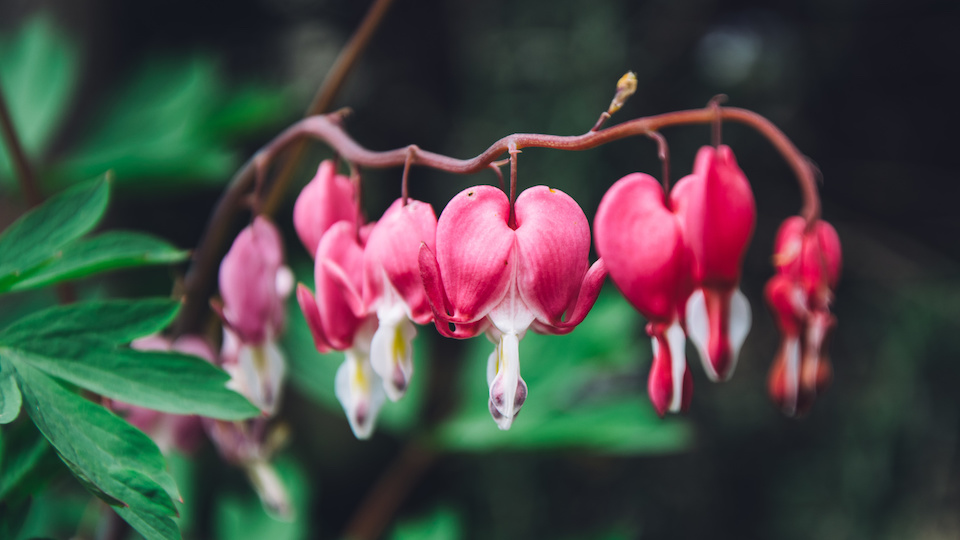There’s no doubt that winters with bone-chilling, sub-zero temperatures are challenging, but if you’re a zone 5 gardener, you definitely aren’t alone. A fairly substantial chunk of the United States falls into zone 5, including parts of states as diverse as Alaska, Oregon, New York, Minnesota, and California.
You may be surprised how many beautiful perennial plants are tough enough to come through cold winters in zone 5 without a hitch. Here are just a few of our favorite, sturdy, low-maintenance perennials:
Best Perennials for Zone 5 Gardens
Japanese bottlebrush (Aesculus parviflora): Also known as bottlebrush buckeye, Japanese bottlebrush is a hardy butterfly magnet with spikes of feathery white blooms that show up in midsummer, and attractive, palmate foliage that turns yellowish-green in autumn. This tall, shrubby plant grows in full or part shade. Although it is adaptable to nearly any soil, regular irrigation brings out the best.
Bleeding heart (Dicentra Spectabilis): The dangling, rosy-pink, white or red blooms may look dainty, but this lovely woodland plant is tough as nails. Bleeding heart thrives in light shade and rich, fertile, moist soil; however, it may be harmed by consistently wet, soggy winter conditions. Look for blooms to appear in spring before the plant goes dormant during the warm weather months.
Black-eyed Susan (Rudbeckia hirta): With its big, golden yellow blooms centered with purple-brown eyes, black-eyed Susan is among the most popular native wildflowers. Once established, this sun-loving plant tolerates hot, dry weather, blooming consistently from early summer to autumn. Fertile soil is preferred, but black-eyed Susans grow happily in nearly any well-drained conditions. Read the label carefully, as some varieties are best grown as annuals.
Garden phlox (Phlox paniculata): Native to the eastern United States, garden phlox provides scads of billowy blooms from midsummer to fall when temperatures aren’t too hot. Keep in mind that although garden phlox isn’t drought-tolerant, it may develop powdery mildew with overhead watering or in crowded conditions. This sweet-smelling perennial, available in shades of white, pinkish-purple, lavender, red and salmon, entices butterflies and hummingbirds to your garden.
Blazing star (Liatris spicata): A hardy native of the eastern United States, blazing star produces tall spikes of reddish-purple blooms in late summer. Blazing star is adaptable to most soil types, but it prefers moist, fertile conditions and is best planted in soil with excellent drainage. Keep in mind that it doesn’t do well in cold, wet soil during the winter. Blazing star is a good choice for a bee or butterfly garden.
Astilbe (Astilbe spp.): Available in shades of red, deep pink and white, astilbe thrives in light to moderate shade and may be scorched in full sunlight. Astilbe isn’t drought-tolerant, and with regular moisture, provides dense clusters of tiny blooms above ferny green foliage in early summer. This perennial works well as a ground cover and is a great choice for shady woodland gardens, borders, or along a pond or stream.
Penstemon (Penstemon digitalis): Another North American native, penstemon, also known as beardtongue, lights up the garden with lovely, tube-shaped white flowers in late spring and early summer. This hardy plant tolerates drought and poor soil, including clay, but doesn’t perform well in soggy conditions. Deer usually aren’t tempted by penstemon, but birds and butterflies can’t resist the sweet nectar.
Bee balm (Monarda didyma): It should come as no surprise that bee balm, native to Canada and the United States, tolerates chilly winters like a champ. Although gardeners can choose from a variety of cultivars, Monarda didyma is a great choice if you like the intense red flowers that show up in mid- to late summer. As the name suggests, bee balm attracts bees, but also butterflies and hummingbirds. Bee balm loves bright sunlight, but benefits from afternoon shade where summers are hot.
Delphinium (Delphinium elatum): Native to Europe and Asia, this popular, old-fashioned plant is highly valued for its tall, majestic blooms in shades of pink, creamy white, and a range of intense blues and purples. Although delphinium is hardy, it appreciates fairly cool summers and shady afternoons. Be sure to provide sturdy support, as the spiky flowers can reach heights of 5 to 6 feet (1.5 to 2 m.).
-Mary Helen Dyer




